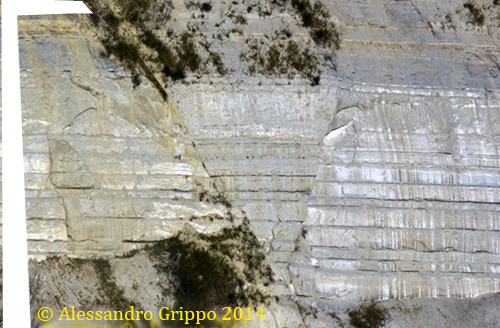
|
| ||||
| Faults | Last Updated • January 18, 2014 | |||
(Under construction)
 A wedge or rock stands out in this otherwise continuous sequence of marly sandstones.
These are Miocene turbidites from the Northern Apennines of Italy.  By tracing a few contact surfaces between layers (in black)
Since the layers are offset, the interruption points mark the presence of faults (and not a simple joint).
The fault to the left is a normal fault: the hanging wall is moving downward with respect to the footwall.
The reverse fault does not cut the shaly portion of the outcrop, creating just a little kink in its lowermost part. As a consequence, the normal fault is younger (occurred afterwards) than the reverse fault. 
In this and the next image, an attempt to reconstruct the original, uninterrupted stratigraphy is made.
With this knowledge, and with the help of Adobe Photoshop© and Adobe Illustrator© softwares,  Finally, the last block is matched with the previous, rendering an image of an undisturbed sequence. | | |||